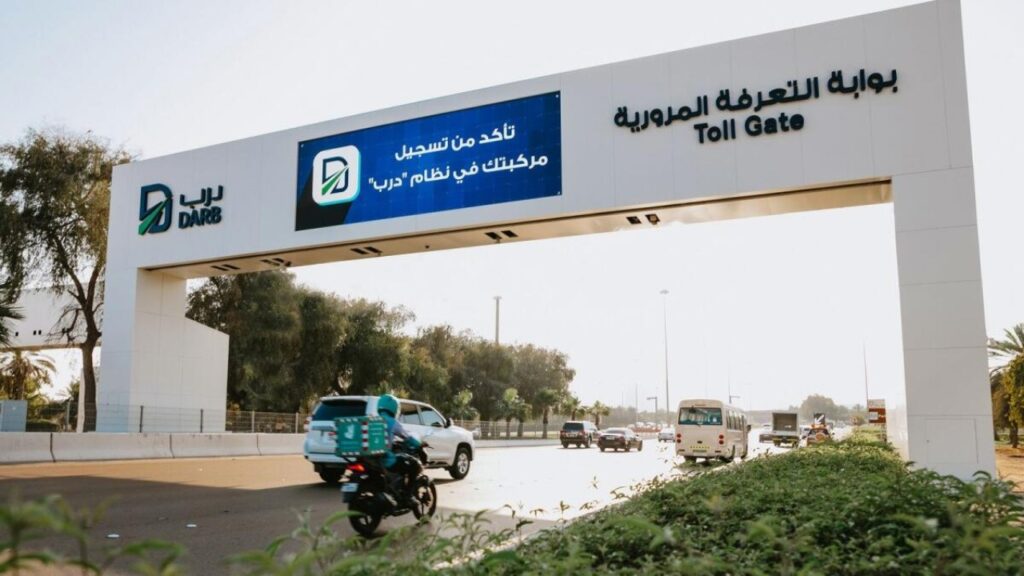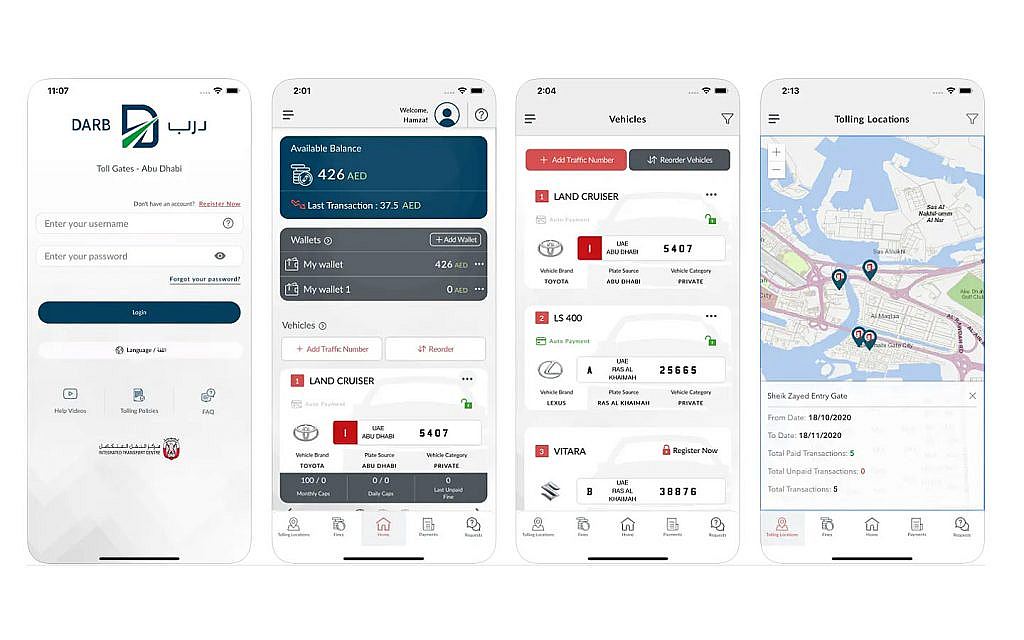In the United Arab Emirates (UAE), efficient transport and logistics systems are crucial to sustaining the nation’s rapid growth and economic development. The introduction of the DARB registration system plays a pivotal role in transforming how goods and vehicles are monitored, tracked, and managed across the country. This article explores the importance of DARB registration, its implementation process, and how it enhances the transport industry in the UAE.
What is DARB Registration?
The DARB system is a comprehensive registration platform launched by the UAE’s Federal Transport Authority (FTA) designed to regulate and monitor the transportation of goods across the country. The system aims to streamline the process of managing heavy-duty vehicles, trucks, and other transportation logistics involved in the movement of goods between the UAE’s emirates and beyond. DARB registration is mandatory for companies involved in freight transport, ensuring that all their vehicles meet the legal requirements to operate within the country.
The system provides a more efficient way to ensure that transportation firms comply with safety standards, regulations, and operational policies set by the government. It is part of a larger initiative to digitize and modernize the country’s transport infrastructure and provide better monitoring, which is essential for long-term sustainability and safety.


Why is DARB Registration Important?
- Streamlining Logistics Operations:
The DARB registration system plays an essential role in simplifying the logistics and transportation process in the UAE. By registering all vehicles involved in transporting goods, the system ensures that goods are moved efficiently, reducing delays and improving the supply chain. Whether it’s for local deliveries or international shipments, having an integrated system in place helps streamline operations. - Ensuring Compliance with Safety Standards:
The DARB system ensures that all vehicles used for transporting goods are registered, checked for safety compliance, and meet the standards set by regulatory authorities. This includes maintaining roadworthiness, adhering to environmental regulations, and ensuring that drivers and companies meet the required training and certifications. Compliance with these standards reduces the risk of accidents and increases road safety for everyone. - Tracking and Monitoring:
DARB’s registration system integrates technologies like GPS and RFID to track vehicles in real-time. This ensures transparency and accountability, allowing logistics companies to monitor the location and status of their vehicles. Furthermore, government agencies can track the movement of freight for customs clearance, taxation, and regulatory purposes, making it easier to ensure compliance. - Supporting the UAE’s Vision for Smart Cities:
As part of the UAE’s broader vision to develop smart cities and modernize infrastructure, the DARB registration system supports the integration of technologies like IoT (Internet of Things) and data analytics. This shift toward digitization allows the government to manage transportation systems more effectively, ensuring smoother operations and contributing to the country’s overall innovation efforts. - Enhancing Regulatory Enforcement:
The registration system allows the government to monitor the transportation industry more closely, ensuring that rules and regulations are adhered to. Through the use of DARB registration, the government can identify potential issues such as overloading, unsafe driving practices, or non-compliance with licensing, and take immediate corrective action.
The DARB Registration Process
For companies looking to register their vehicles with the DARB system, the process is straightforward, though it requires careful attention to regulatory guidelines. Below are the general steps involved in registering vehicles under DARB:
- Prepare Required Documentation:
Companies must first gather the necessary documentation before they begin the registration process. This typically includes:
- Business registration details
- Proof of vehicle ownership
- Driver licenses and other qualifications
- Insurance documents
- Compliance with environmental and safety standards
- Vehicle Inspection:
Once the documentation is in order, vehicles are subject to an inspection to ensure they meet safety, technical, and regulatory standards. This is a crucial step in the registration process, as vehicles that fail to meet the standards will not be eligible for registration. - Online Registration:
Companies can complete the registration process through the official DARB online portal. This digital platform allows businesses to register their vehicles and submit required documents remotely. The online system ensures a quick and hassle-free process for firms, avoiding the need to visit physical offices and reducing administrative burdens. - Payment of Fees:
After the registration is completed and the vehicle passes inspection, companies are required to pay the registration fees. These fees help cover the costs of maintaining the system and ensuring continued compliance with safety and regulatory standards. - Issuance of DARB Registration Certificate:
Upon successful completion of the registration process, the company will receive a DARB registration certificate. This certificate serves as proof that the vehicle is authorized to operate within the UAE, and it must be kept on hand during inspections or audits.
DARB’s Role in Supporting Businesses
The introduction of DARB registration brings numerous benefits to logistics companies, transporters, and businesses that rely on the movement of goods:
- Improved Operational Efficiency:
By centralizing the registration and tracking of vehicles, DARB enables businesses to manage their fleets more effectively. Businesses can track and optimize routes, ensuring the best possible outcomes for time management and delivery efficiency. - Cost Savings:
Through DARB registration, businesses can identify inefficiencies in their operations and take steps to reduce costs. For instance, better route planning and fleet management can lead to fuel savings and reduce operational downtime. - Better Planning and Forecasting:
The data provided through DARB registration allows businesses to plan more effectively, forecast transportation needs, and anticipate challenges. It also aids in maintaining adequate stock levels, ensuring timely deliveries, and avoiding disruptions in the supply chain. - Enhanced Customer Trust:
By demonstrating adherence to safety regulations and compliance with government standards, businesses using the DARB system can build trust with customers. This trust is vital in maintaining long-term relationships and ensuring repeat business, especially in a competitive market like the UAE.
Looking Ahead: The Future of DARB Registration
As the UAE’s economy continues to grow, particularly in sectors like e-commerce, retail, and manufacturing, the DARB registration system will only become more integral to the transportation landscape. Several key developments can be expected in the future:
- Expansion of Smart Technologies:
The system may integrate more advanced technologies such as artificial intelligence, blockchain, and autonomous vehicles. These innovations will help improve efficiency, enhance security, and further reduce the potential for human error. - Regional Integration:
There may also be efforts to expand the DARB system beyond the UAE, creating a regional network for tracking and monitoring freight across the Gulf Cooperation Council (GCC) countries. This could help businesses operate more seamlessly across borders and strengthen trade relations in the region. - Environmental Sustainability:
With increasing focus on sustainability, DARB may play a role in encouraging greener transportation options. This could include promoting electric vehicles, fuel-efficient trucks, and other eco-friendly transport solutions to reduce carbon footprints.
Conclusion: Empowering the UAE’s Transport Future
The DARB registration system is a game-changer for the transportation industry in the UAE. By providing a streamlined process for vehicle registration, promoting safety compliance, and integrating technology to track and manage logistics operations, the system significantly enhances the efficiency of the country’s transportation networks. Businesses benefit from smoother operations, while the UAE government can maintain better control over road safety and regulation.
As the UAE continues its ambitious plans for growth, infrastructure development, and technological advancement, DARB’s role in shaping the future of transport will remain vital in ensuring that the country stays ahead in the global marketplace.
Do follow Uae stories for more Updates













